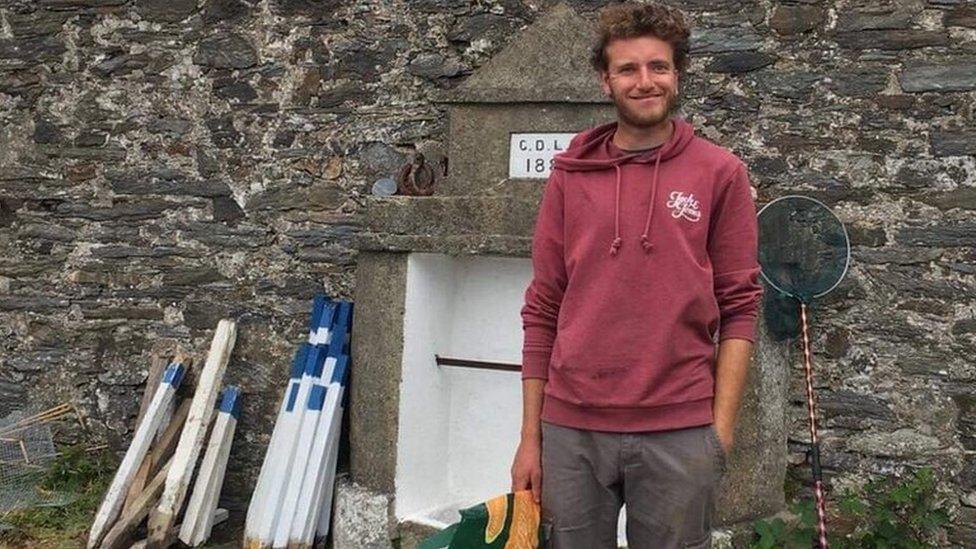Bird warden 'captivated' by remote nature reserve

Aron Sapsford (centre) is the longest serving warden in the island's history
- Published
A bird warden who made a remote island off the south coast of the Isle of Man his home for more than a decade was "captivated" by its environment.
Aron Sapsford lived and worked on the Calf of Man for 11 seasons, becoming the island's longest serving warden since a bird observatory was created in 1959.
Mr Sapsford was one of a team of four who would live on the 1 sq-mile (1.6km) nature reserve for nine months of the year.
He said the beauty of the ever-changing landscape throughout the seasons was something that kept drawing him back.
Manx National Heritage is the custodian of the island, which sits off the south coast of the Isle of Man, with the Manx Wildlife Trust commissioned to recruit and manage the wardens.
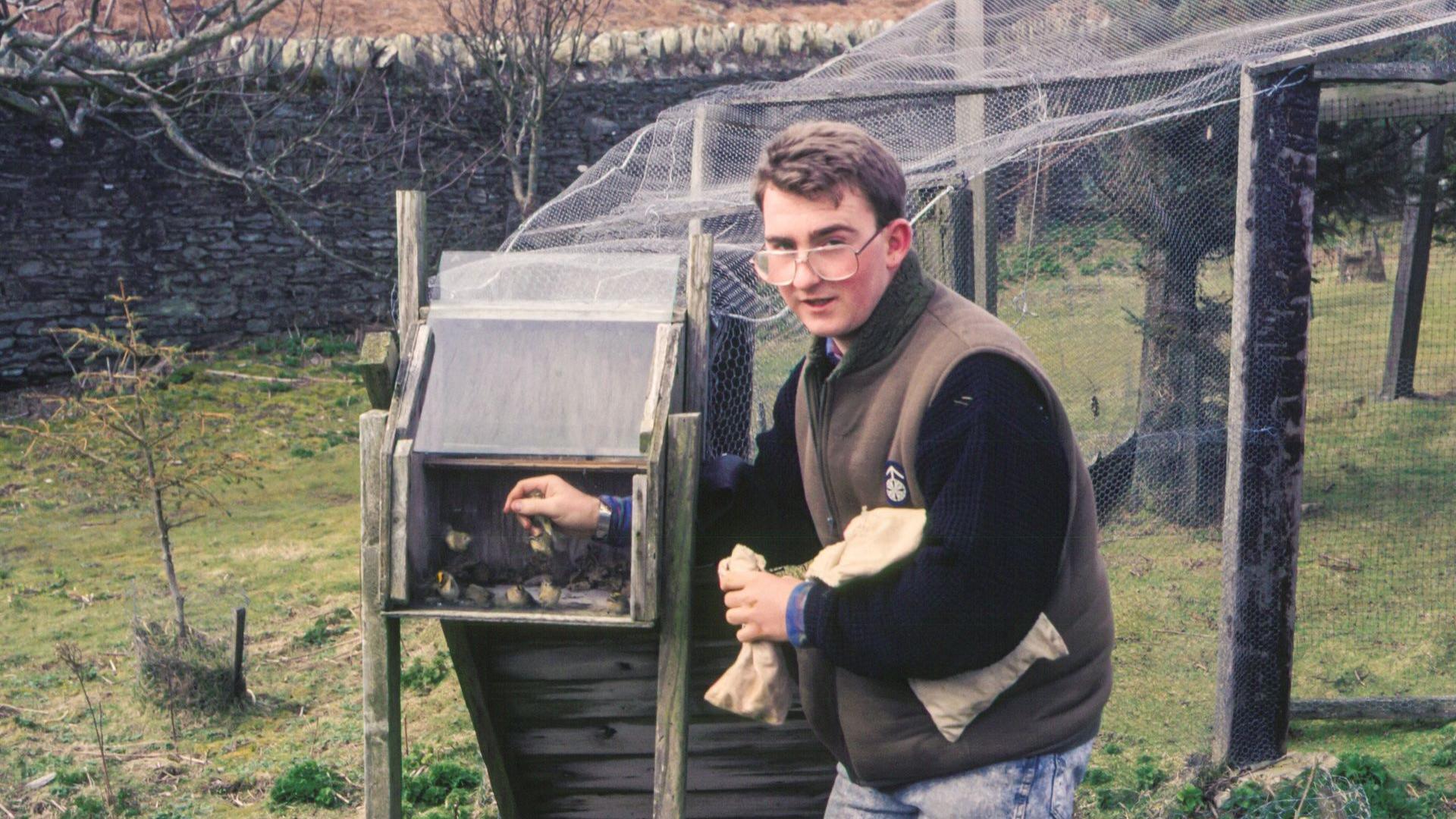
Aron Sapsford began his first season on the Calf of Man in 1988
Joining in 1988 as an assistant, Mr Sapsford returned for the next two years as the bird warden.
He said the Calf was "very different when I was first there", with limited connection to people due to the lack of a telephone.
Corresponding with with someone "had to be by writing which would be delivered on the boat", with a three or more week wait before receiving a response, he said.
There was no electricity on the island for his first three months, but the team would use storm lamps and a gas bottle fire.
"At that time I was young, so other aspects of life lured me not to live on a remote island," he said.

Travel between the Isle of Man and the Calf of Man is done by boat
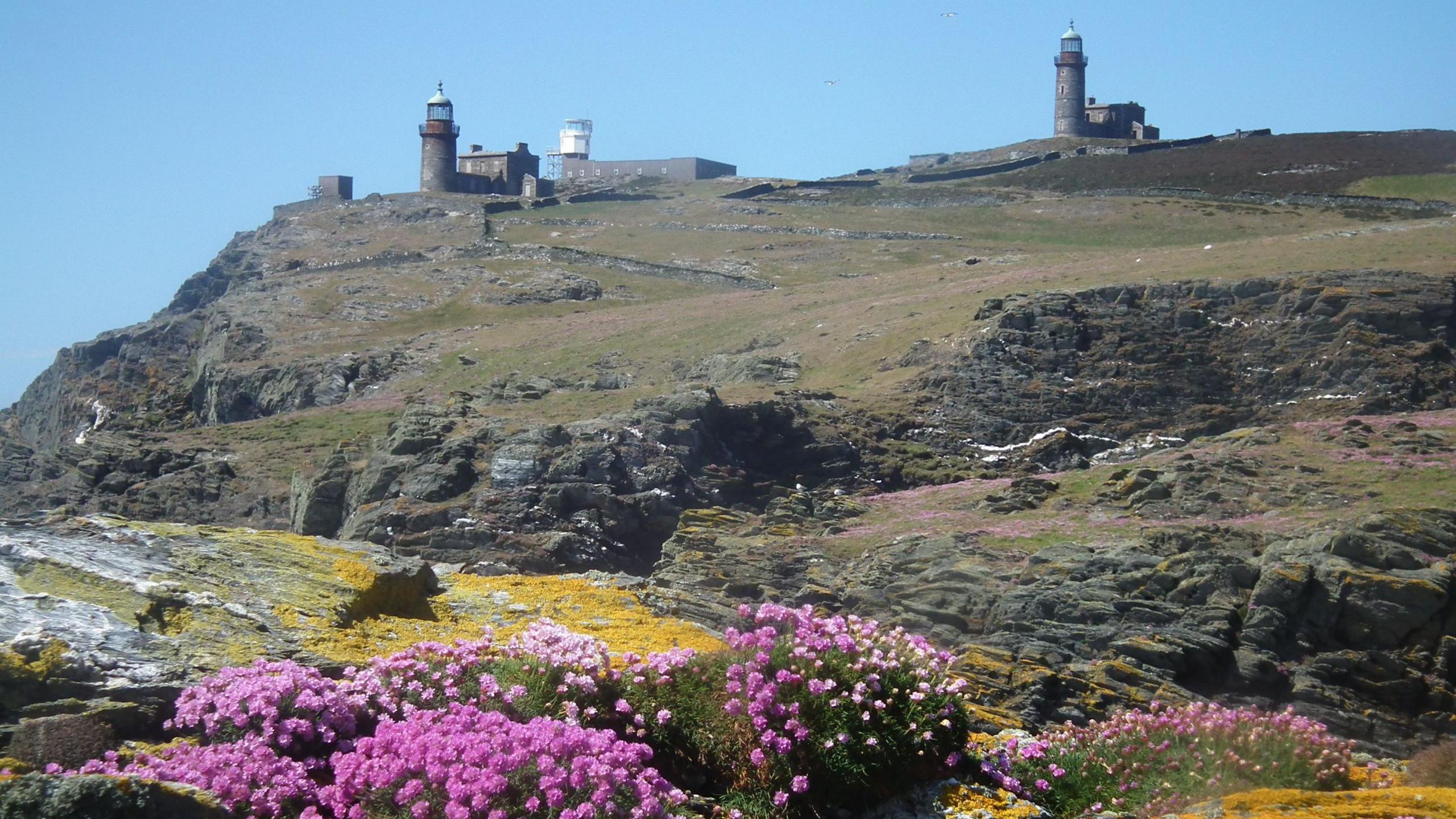
With four lighthouses, the Calf of Man has the highest density of them in the British Isles
After a significant time away, Mr Sapsford returned to the Calf in 2017 and has held the role for the last eight years.
Reflecting on the changes he encountered he said: "When I came back, we had internet, phones, a lot more people coming to the calf so it wasn't so isolated and was a lot easier to spend longer periods of time there."
A weekly boat would bring food out to the island, but team members would keep two to three weeks of food supplies in case of stormy weather disrupting the crossings.
Rain water collected on the roof of the building would be filtered to become the team's drinking water.
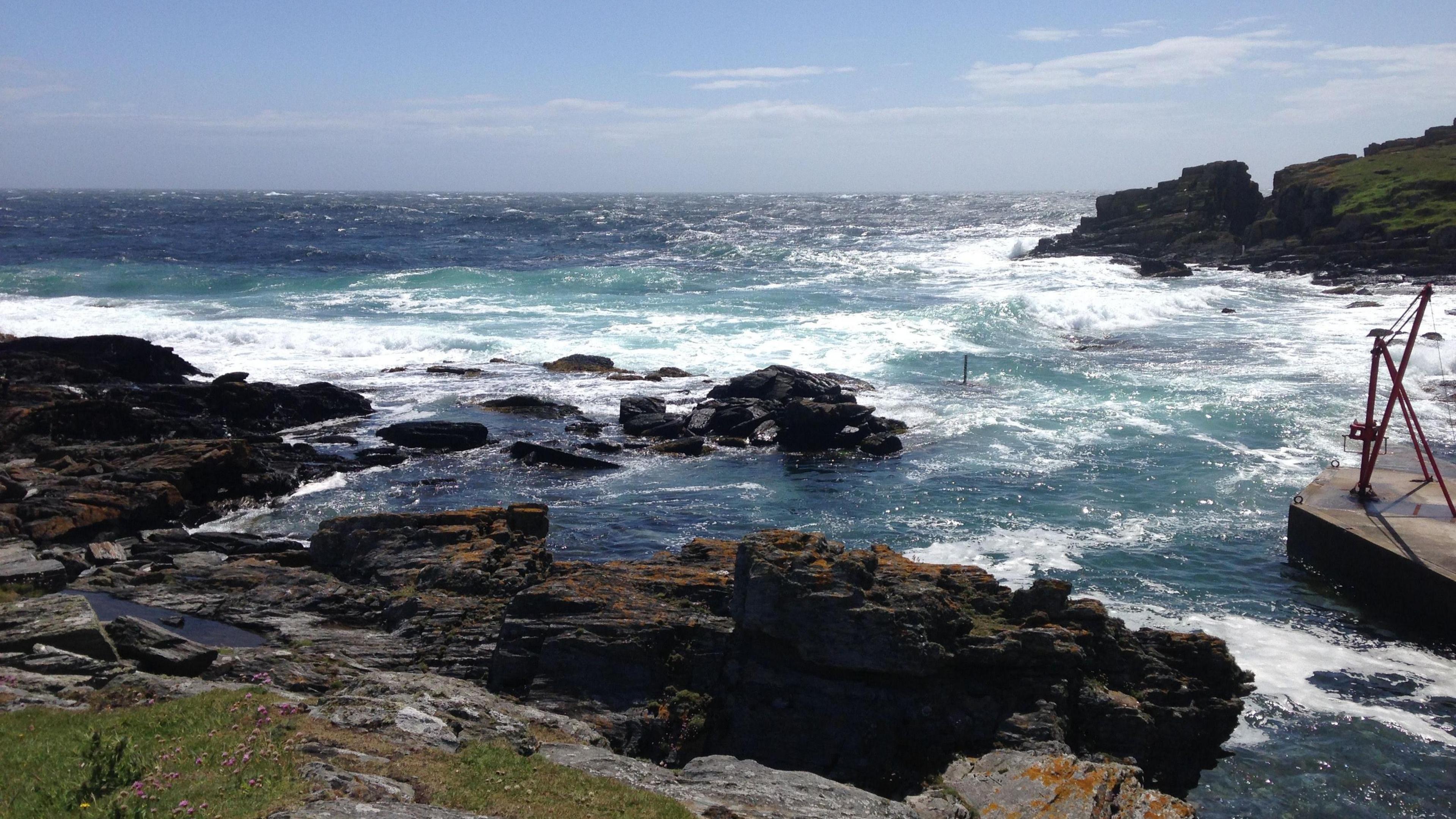
Those based on the small island depend on a weekly boat to deliver supplies
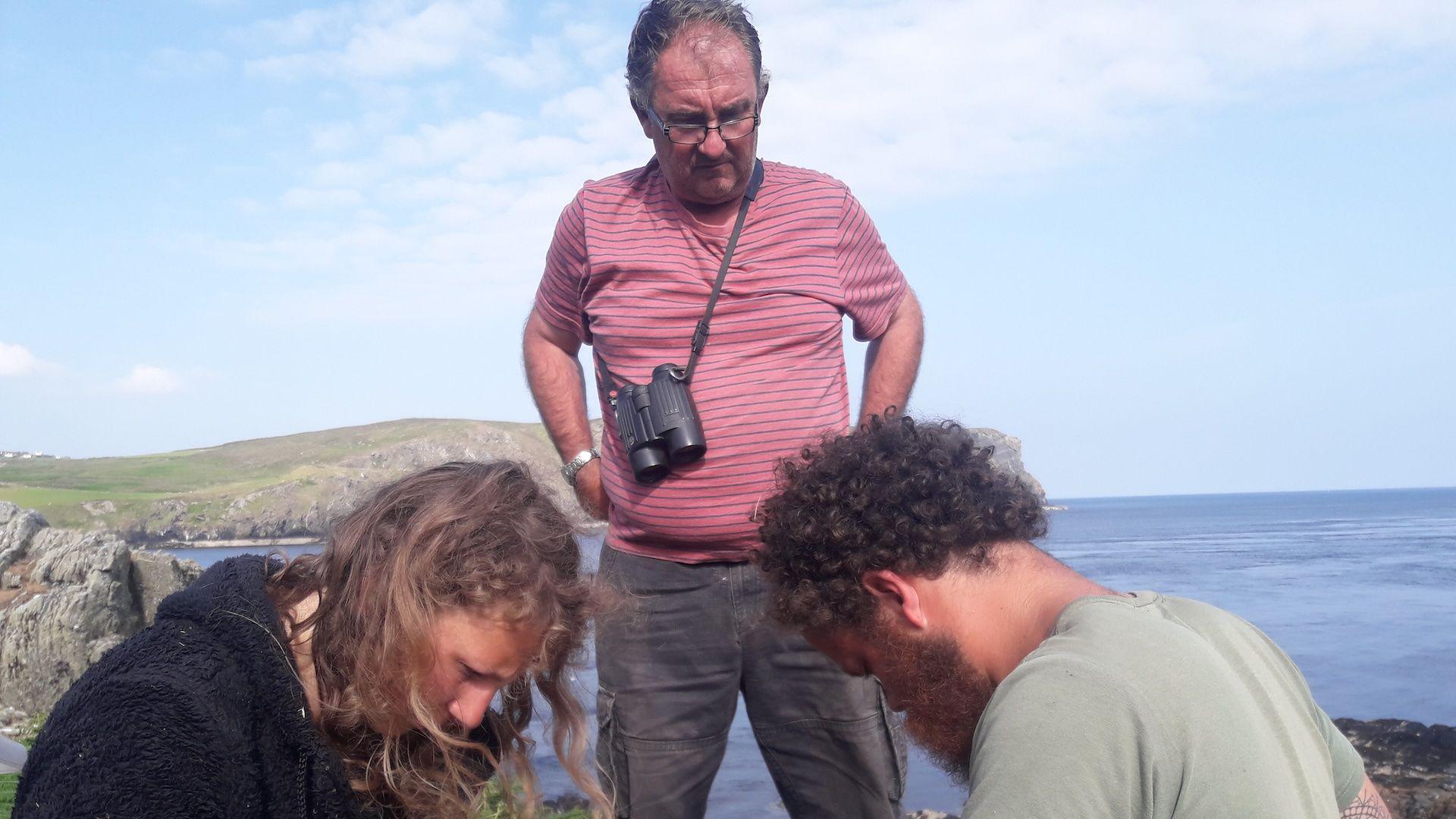
A team live on the island between March and November each year
He said his principle role was monitoring bird populations that were present or moving to the island, which was an important area for breeding sea birds.
One of 20 observatories in the British Isles, the birds are caught in mist nets and collected by the team regularly before being ringed, measured and released.
But, because a lot of birds are on cliffs, "you are scaling up and down rock faces all the time", he said.
As data had to be collected to be recorded on the day, it often meant working 12 to 18 hour days.
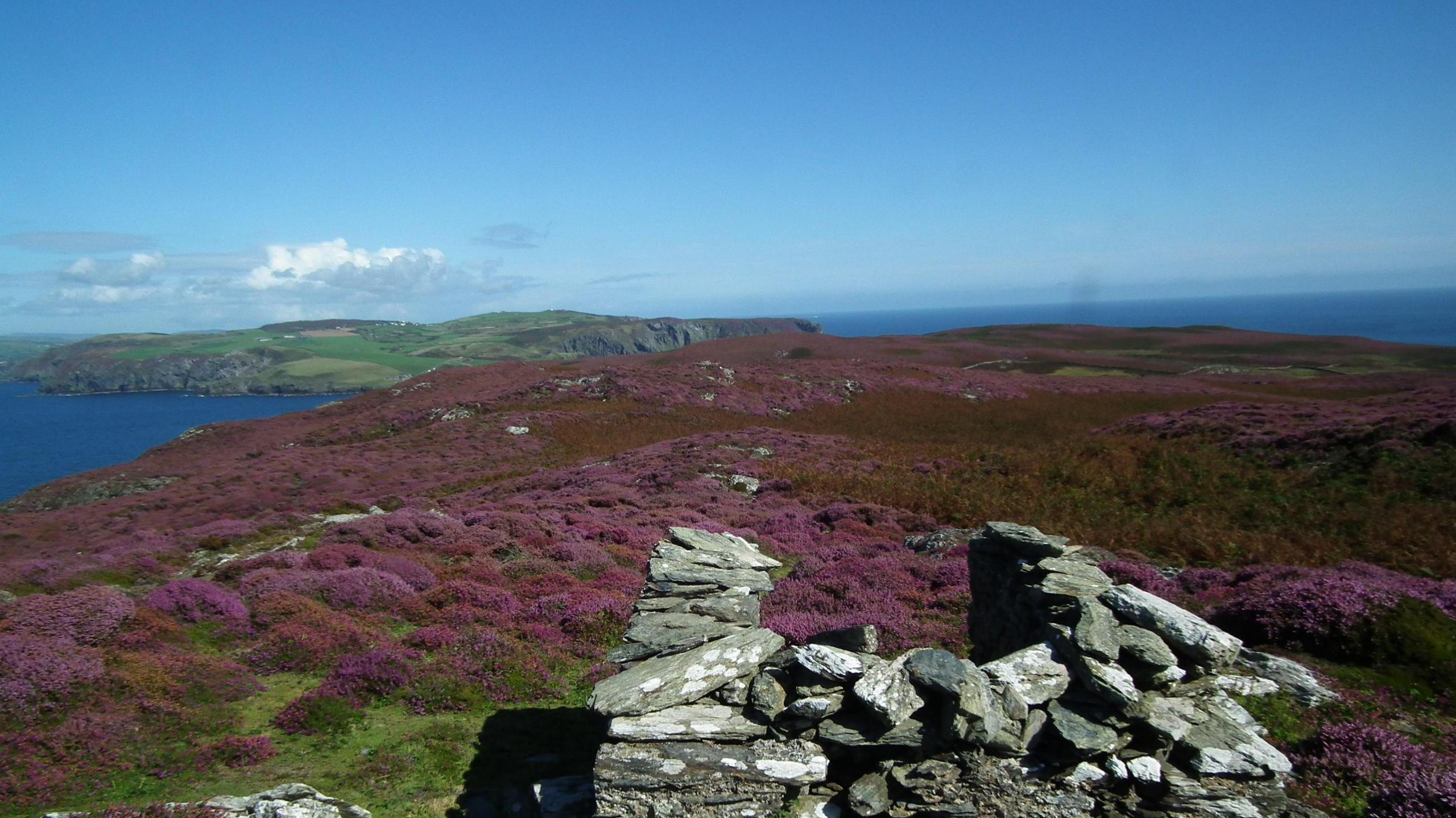
The highest point of the Calf of Man is called Bushell's
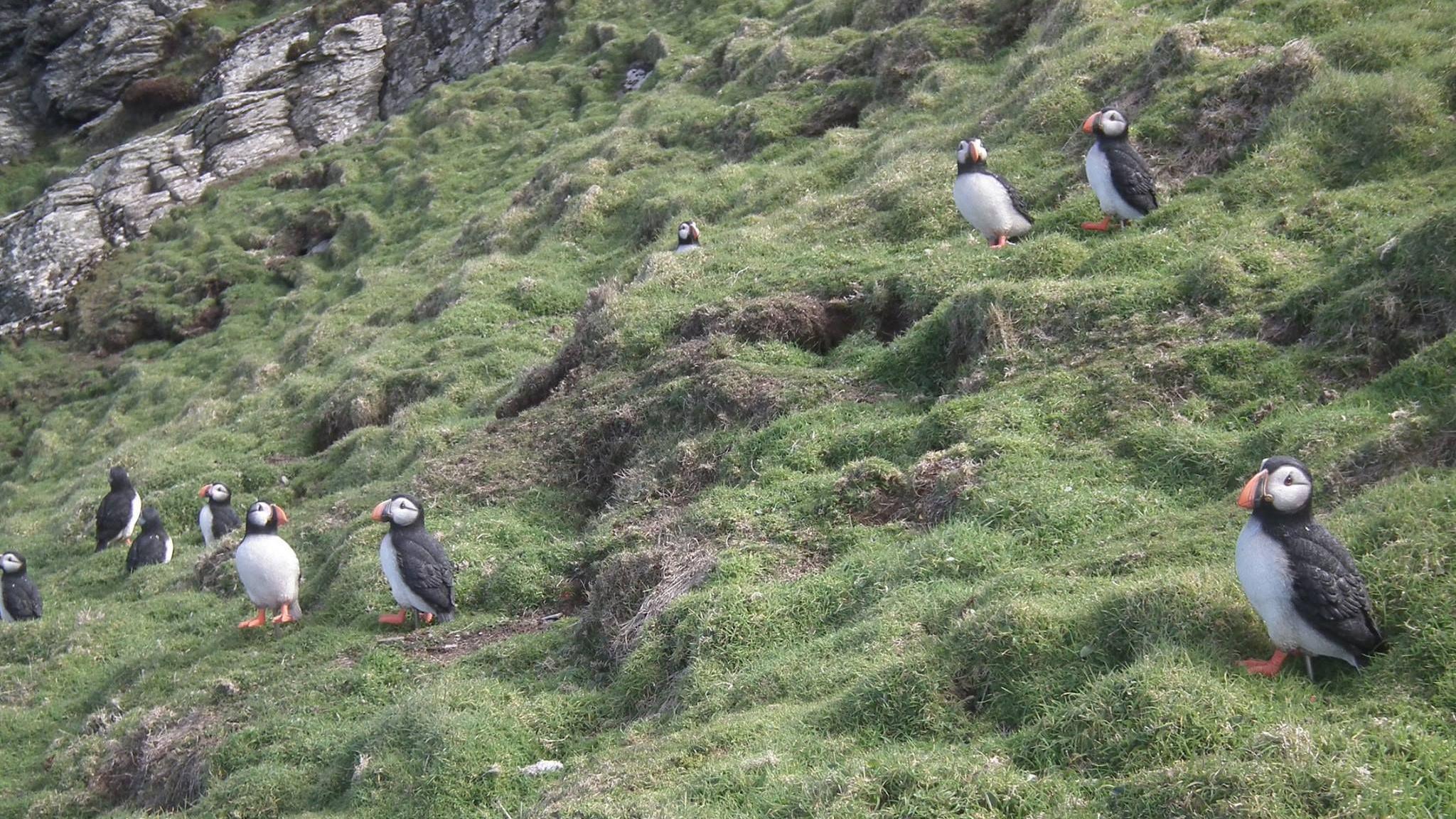
The work often involved scaling step rock faces Mr Sapsford has said
With 65 years of data gathered, the team could identify population trends, and while some species had benefitted, there was a "much bigger trend of species declining which probably is a factor of global warming", Mr Sapsford said.
He said a highlight of his time as a warden was in October 1989, when he caught a mourning dove, which was the first time that species had ever been seen outside of the Americas.
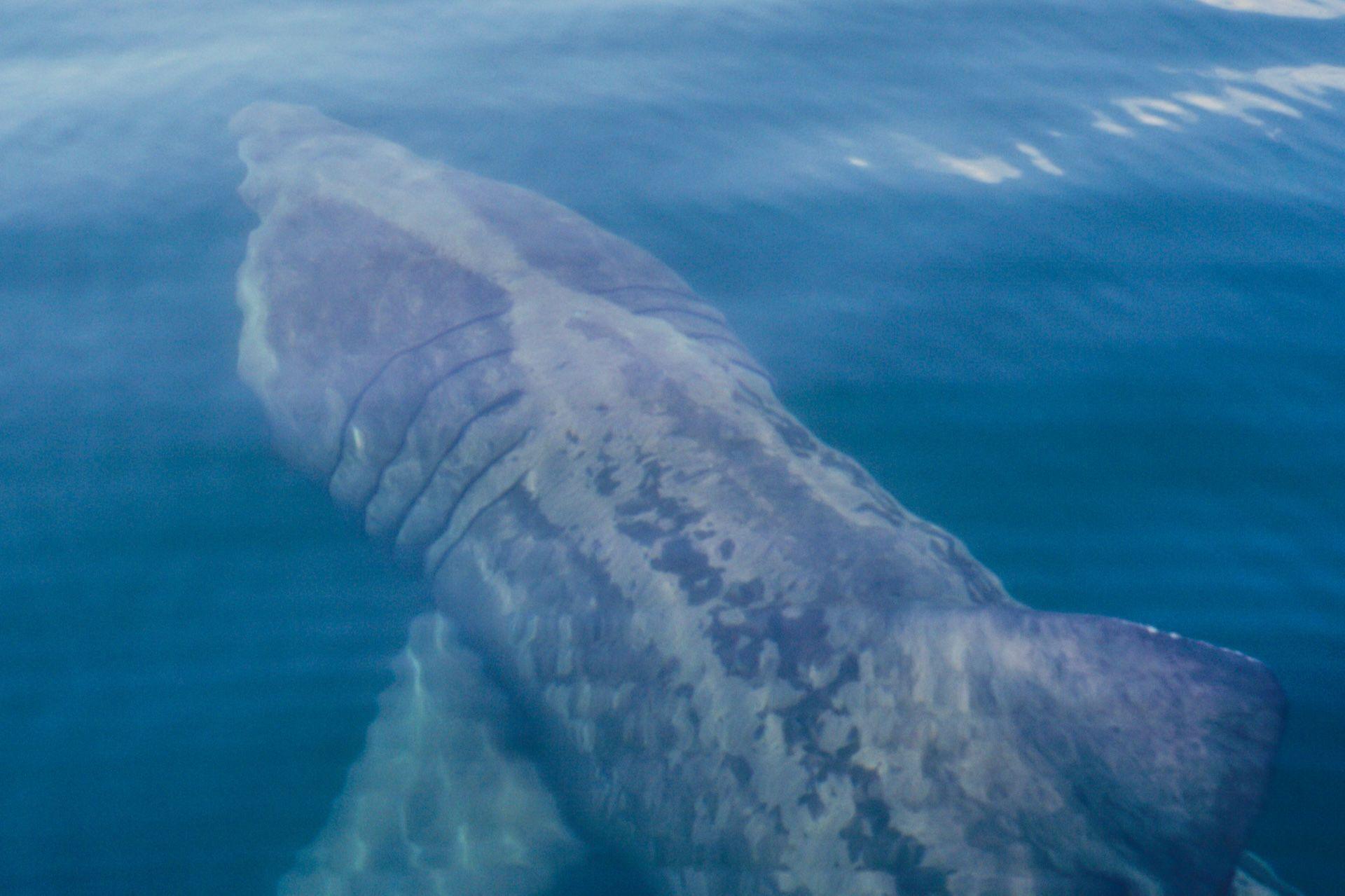
Mr Sapsford said he saw a group of 50 to 60 basking sharks in the late 80s
Another less pleasant memorable moment was breaking his ankle as he fell down a hatch in a lighthouse during a storm, which led to him being airlifted off the island by helicopter.
But Mr Sapsford said while the "isolation" of the island would present challenges, it was also one of his favourite parts about living on the Calf, as "you can go for an evening walk and know you won't see anyone else".
Why not follow BBC Isle of Man on Facebook, external and X, external? You can also send story ideas to IsleofMan@bbc.co.uk
Related topics
More like this story
- Published4 November 2024
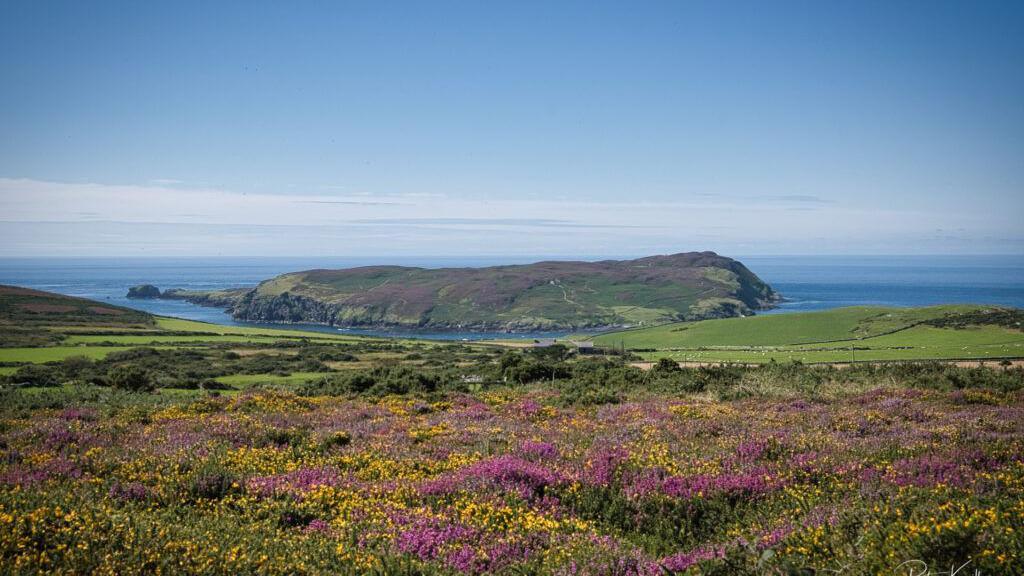
- Published13 April 2021
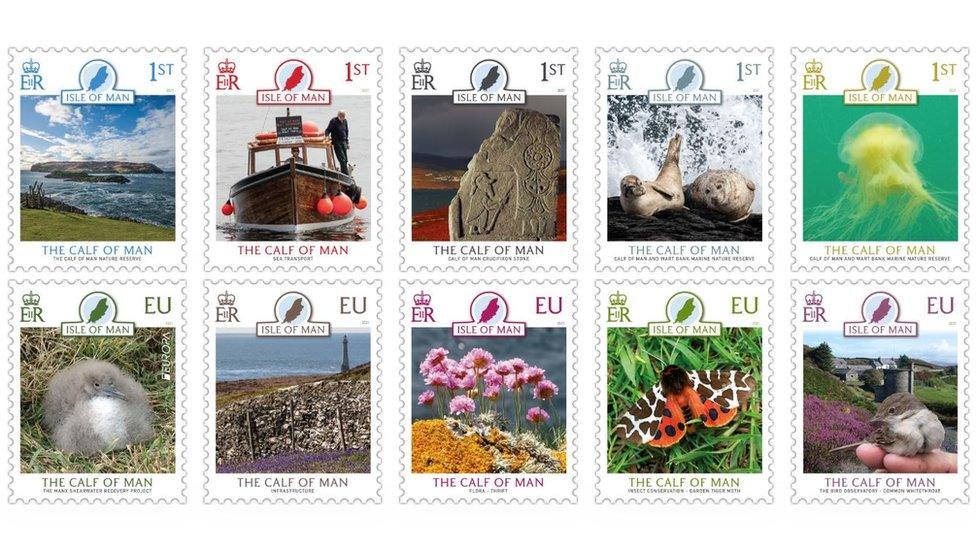
- Published10 December 2018
